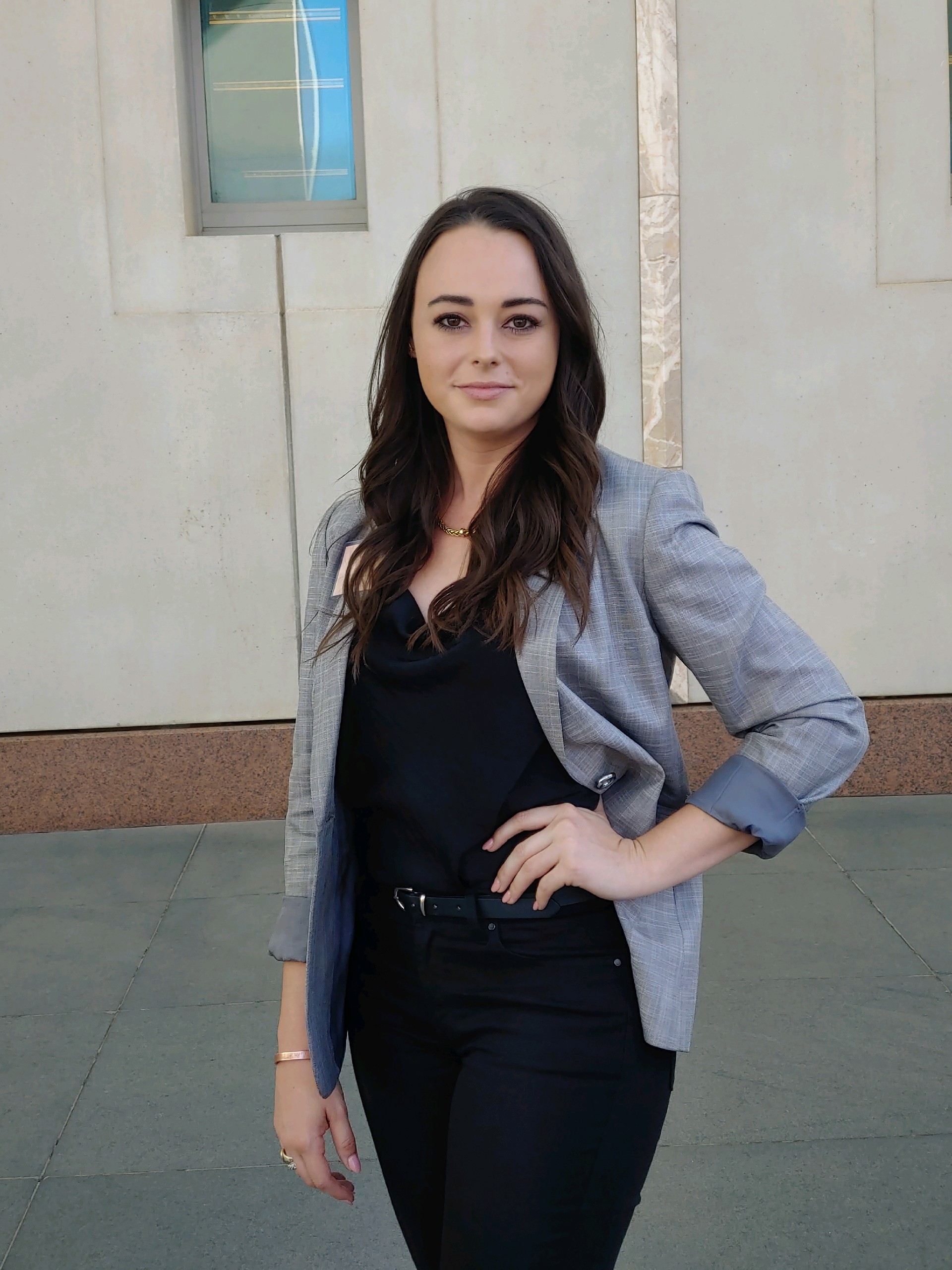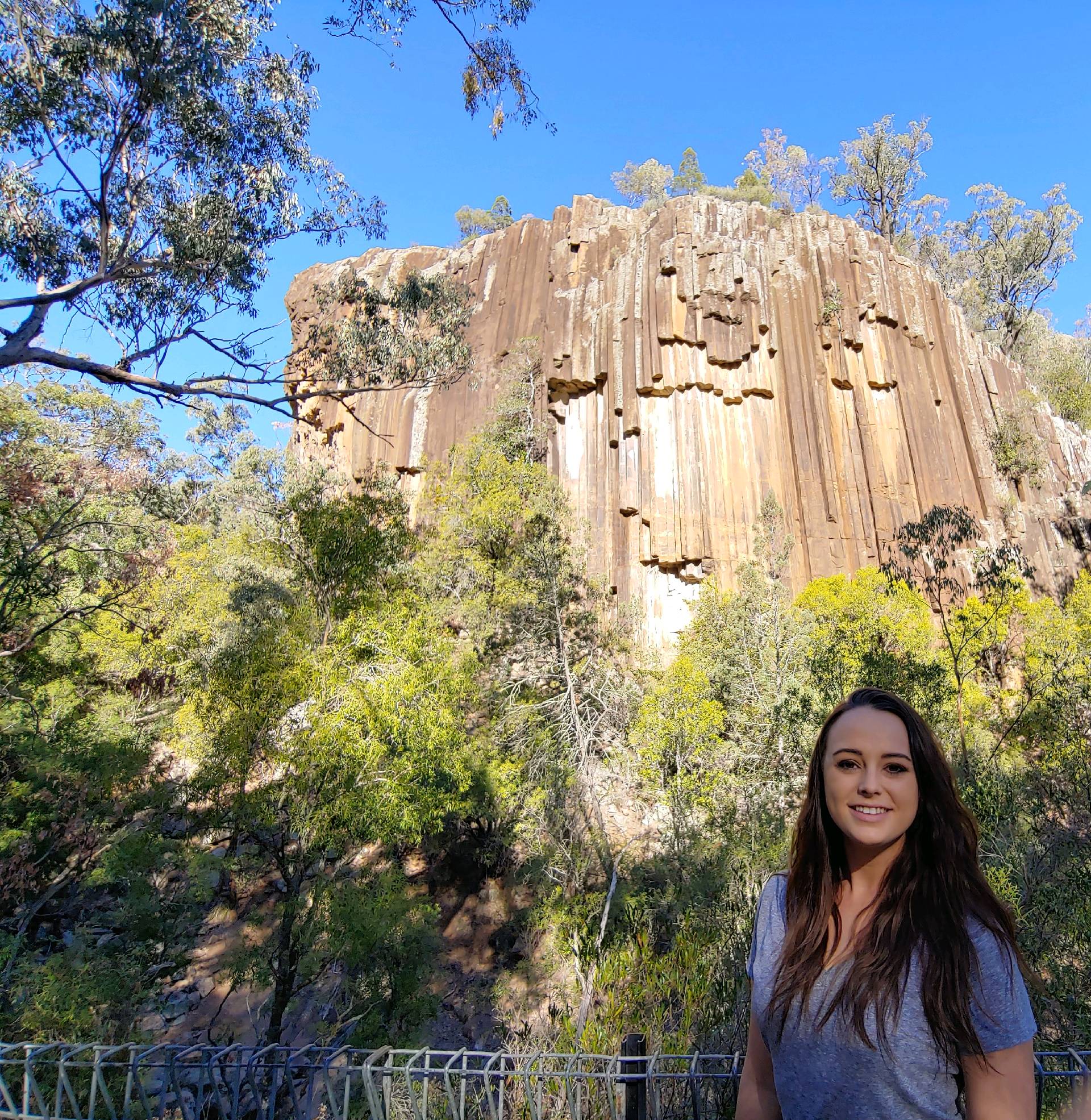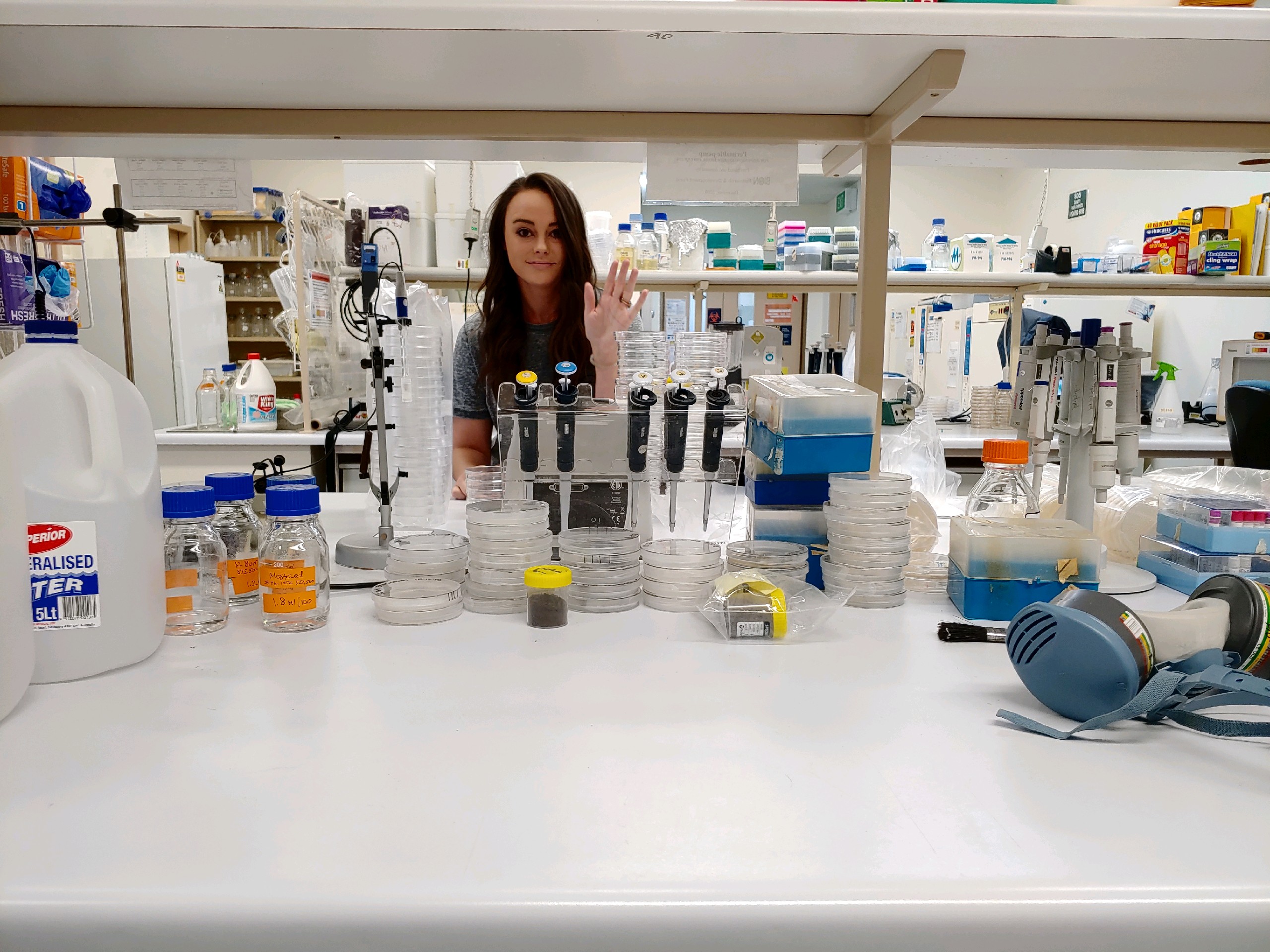
When Shelby Young found out she had received a prestigious Fulbright U.S. Student Program award, she was close to earning a master's degree in plant and soil science through Texas Tech University's College of Agricultural Sciences & Natural Resources (CASNR).
Throughout her time at Texas Tech, Young had traveled twice to Australia to learn more about the country's cotton industry. Inspired by her travels, Young applied for a Fulbright award to continue her research in Verticillium wilt, a soilborne fungal disease that contributes to cotton yield loss in Australia and the U.S. The pathogen colonizes the plant's vascular system, negatively impacting water and nutrient uptake, causing wilting, leaf discoloration and death.
Going to the land Down Under
Fast forward to June 2019, and Young was on her way New South Wales, Australia, to pursue her cotton disease research through her Fulbright grant.
“My Fulbright program was 10 months, but I was in Australia for a year,” Young said. “I went a couple of months early to travel around and get settled before my program officially started.”

Young began her program in rural Australia, which is called regional Australia.
“It was a pretty diverse and fast-paced experience,” Young said. “While I was out in regional Australia, I worked with nine cotton growers to sample quite a lot of fields for the Verticilllium wilt pathogen. I also built on some work I did for my master's degree that was a collaboration with Dr. Karen Kirkby's plant pathology lab at the Australian Cotton Research Institute.”
After her time in regional Australia, Young continued her work with Australian plant pathologist Karen Krikby, whom she met at a plant pathology conference in San Antonio in 2017, at the New South Wales Department of Primary Industry in conjunction with Western Sydney University.
“I got the opportunity to build on research I'd already done, but also take it in a completely new direction,” Young said. “My university contact at Western Sydney University specialized in metabolomics profiling – the comprehensive quantitative and qualitative analysis of all small molecules in a system – which I had never done or looked into. We were able to get together and design a really cool experiment that hadn't been done before, and I learned a lot about the methodology behind that. We aimed to look at the metabolomic profiles of cotton and the fungus that causes Verticillium wilt at several points throughout the disease process. Metabolites are small molecules that serve a wide variety of purposes in biological processes. Plant pathogens produce metabolites that act as toxins as they attack the plant. Plants can produce metabolites in response to, and as a defense against, disease. Basically, we could detect what metabolites were being produced by both the cotton plant and the Verticillium wilt pathogen during infection and as the disease progressed.
“And then, COVID-19 happened.”
Worldwide crisis
When the COVID-19 pandemic swept across the world, countries everywhere locked down, trying to get people who were overseas home and restricting entry to foreigners. Young said she and her cohorts were given the option to leave immediately or wait out the crisis.
“Once COVID-19 hit, the U.S. Department of State gave us an option to leave right then or said we were welcome to stay,” Young said. “This was in March. Everybody thought it was going to blow over pretty quickly, so I thought I would ride it out until the end of my visa. There were no flights for a while, and then flights home were $10,000. Then, there was a two-week window of being able to get home for a reasonable price that was still in the budget. So, I was able to move back to the U.S. at the end of June 2020 and spent two weeks in quarantine. Thankfully, I was able to apply for Raider Relief funding to help cover some of the steep cost of two weeks accommodation for quarantine.
“Everybody went about it pretty differently. Some people in my cohort went home at the first opportunity. Some stayed to pursue opportunities in Australia because they're in epidemiology – the method used to find the causes of health outcomes and diseases in populations – so it was like their Olympic opportunity.”
Since Young was working for a state government organization, she had to follow to their mandates.
“Australia had a very strict lockdown policy,” Young said. “Since I was working for the New South Wales Department of Primary Industry, I was subject to the rules the state had in place to keep its employees safe. So, one day, I was in the lab taking samples and then I just never got to go back. Dr. Jonathan Plett, the researcher I was working with at Western Sydney University, kindly travelled out to the lab and loaded up all my plants in his car to take them to his lab at the university.

“Graduate students in his lab processed the samples from my plants and stored them in the freezer, where they sit ready to be analyzed today. They can sit and wait there indefinitely, which is great. We rallied and got as much done as we could, so it was still productive. We got a publication done while I was there that was from work we'd done previously together for my master's. Even though it got cut short there at the very end, it was an incredibly rewarding experience.”
As if Young's accomplishments weren't impressive enough, she also received a second Fulbright to pursue her doctoral degree. However, she decided to take a different path.
“I'm honored to have been awarded a second Fulbright for a doctorate, but I ultimately decided to pursue a Juris Doctor degree,” Young said. “Partially influenced by the COVID pandemic, I think it's crucial moving forward to have more scientists influencing policy decisions, and I hope my apex of science and law can contribute to that.”
Support from Texas Tech
Young said she wouldn't have been able to pursue her Fulbright award without the help from Wendoli Flores, the director of the Prestigious External Student Awards Office in the Honors College.
“The office was absolutely wonderful, and Wendoli was so helpful,” Young said. “The guidance she provided and her input and advice was invaluable. She put so many hours into helping every single one of our applicants, and it's just incredible. I definitely wouldn't have known the best way to go about the application process, and I don't think I would have been as ambitious in my research proposal plans if not for Wendoli's encouragement and guidance. Texas Tech is lucky to have her.”
Young also said the connections she made while at Texas Tech impacted the trajectory of her future.
“I met Dr. Kirkby at a conference in 2017 from the opportunities Texas Tech provided me,” Young said. “She had worked with some folks from Texas Tech and Texas A&M Agrilife. We got to chatting, and we just hit it off. Verticillium wilt in cotton is prominent in the U.S. and Australia, so we got to compare how we did things in our lab and her lab and in the literature from both Australia and the U.S. And that ended up being the basis for my master's degree.
“Then, the Fulbright project we came up with was taking that one step further. We compared the methods of each of our laboratories and tested the most effective way to go about what we're trying to do – detect how much of the Verticillium wilt pathogen was present in the field soil. Then, we developed that into a tool that Australian farmers could use to predict the severity and likelihood of their crop developing diseases before they planted, so maybe they wouldn't plant cotton that year or make different management decisions. It really all came from the opportunities I had at Texas Tech, to go and meet people and talk to scientists. Those connections wouldn't have been there without Texas Tech.”
This story was first published in Texas Tech Today. See the original article here.
